The Scottish Tartan Cloak of Joseph
Contents:
Detailed List of Contents.
(1. & 2.) Joseph and the Scottish Tartan
1. Introduction.
2. The Term.
3. Tartan Type Patterns and the Area of Ancient Israel
4. David Rohl, Joseph, and Tartan Cloak.
5. Scottish Tartan and the Temple Garments.
6. Tartan in Ancient Times.
7. Tartan from the British Isles in Masada, of Judah.
8. Tartan in Scotland
9. Tartan in Ireland
10. Tartan in Ulster
Part One. Welcome to Ulster.
Part Two: Titanic Tartans and Clifford Smyth.
The Great Tartan Disputation.
Discussion and Queries.
|
Brit-Am Discussion Group |
Contents by Subject |
Research Recognition Reconciliation Contribute |
|
Site Map Contents in Alphabetical Order |
This Site |
This Article: Detailed Contents
Joseph and the Scottish Tartan
Contents:
1. Introduction.
2. The Term "Cotonet Pastim" (Cloak of Many Colors) and its Actual Meaning.
(a) Cotonet.
Different Interpretations
(b) Pasim.
Rabbi Yonah iben Janach
Radak
HaNatziv
Aryeh Kaplan ("The Living Torah", 1981)
A Midrash Defines Pasim as Like Ears of Corn of Differing Colors
Iben Shushan
Marcus Jastrow, "Dictionary of the Talmud" (1903).
(c) Rank.
Nachmanides (1194-1270, Spain, Jerusalem in Israel)
Daat Sofrim (Rabbi Chaim Dov Rabinovitz 1909-2001, Russia, Israel)
Sforno (Rabbi Obadiah Sforno, c. 1470 - 1550, Italy)
(d) Linen.
(e) Conclusion.
1. Introduction.
Israel had twelve sons. His favorite son was Joseph. The Twelve sons of Israel became the ancestors of the Twelve Israelite Tribes. Joseph became two tribes, Ephraim and Manasseh. We trace Ephraim and Manasseh to Britain, North America, and related areas. Even though numerically many from Ephraim may be found in the USA we consider the USA to have been dominated by Manasseh and to be representative of him. Ephraim found his expression more in Britain especially England. Elements from Manasseh that were once in the British Isles (especially Scotland and Ulster) on the whole moved to the USA were they gave expression to their Tribal character.
We are told that Jacob (also called Israel) gave his son, Joseph, a garment that in Hebrew is called a "cotonet pasim" (Genesis 37:3).
The King James Version of the Bible translates this as "a coat of many colors". This translation, as we shall see, should be acceptable but there are those who contest it.
On the other hand, one finds in various British Israel articles and the like the suggestion that this coat was in effect like unto a Scottish tartan design. As far as we know, however, no proof has ever been really given to equate the cotonet passim with a tartan design.
Nevertheless as the present article below shows it is highly probable that such was the case. How did these other writers come to make such an assumption?
Perhaps it was intuition? Inspiration?
Perhaps it was the writings of Rabbinical Commentators?
There are indications that relatively early British Israel scholarship was influenced by the presence of Jewish scholars or Jewish apostates who had learned in their youth. Here and there Jewish family names such as Abadie and Margolith are mentioned. Also references are made to Rabbinical works (such as Radak "Sefer HaShirashim". Maimonides, Eldad HaDani, etc) that appear in some cases to be based on memory or verbal communication. The Jewish input may have been deliberately played down. In the 1920s British Israel groups in Britain had began to be infiltrated by anti-Jewish reprobates. This trend continued until recently when there are indications that a change for the better may have been effected. The impression is that the BIWF (British Israel World Federation) under its present leadership is not anti-Jewish whereas in the past it may have been.
At all events,
An analysis of the meaning of the Hebrew term "cotonet pasim" and a comparison with garments of tartan-type design worn by Ancient Hebrews indicates that indeed the cloak of Joseph had a tartan design.
But what does it matter?
Why should we care?
What is the type of dress worn by Joseph supposed to tell us one way or other?
If we were to find tartan type designs in archaeological findings in China, Japan, Africa, would it make any difference?
In answer, we would reply, Probably Not!
[In fact, as we will see, tartan designs have been recovered by archaeological excavations in China but here too they may be attributed to an offshoot of the Celts that moved eastward.]
The Ten Tribes of Israel who were exiled by the Assyrians and lost their identity became entities in Western Europe.
Part of the tribe of Joseph reached Scotland. Other Israelites reached Ireland and other portions of what in Modern Terms is considered ancient Celtic Civilization. The Tartan design became associated with Celtic bodies. From Ireland it passed to Scotland along with the Scots who gave Scotland its name. In Scotland it became a national symbol. Today in popular consciousness the design, especially as seen on the Kilt, it is considered particularly Scottish and the Scottish themselves so relate to it.
We know from other sources that many of the inhabitants of Scotland (and their offshoots in Ulster and North America etc) descend from Joseph especially Manasseh. There is therefore significance that the Scottish alone retain and maintain the same dress that distinguished Joseph from his brothers.
Genesis 37 (New King James Version)
37:3 Now Israel loved Joseph more than all his children, because he was the son of his old age. Also he made him a tunic of many colors.
37:4 But when his brothers saw that their father loved him more than all his brothers, they hated him and could not speak peaceably to him.
The tartan dress according to this may well have been the same dress that set Joseph apart from all the others. If this is so it has significance. It does not prove anything in itself but seen in the light of Brit-Am Teaching concerning the Scottish and their Israelite Origins it is well worth considering.
The implication is that the cloak of Joseph had a tartan design. This design was similar to that known from the region of Ancient Canaan (Land of Israel) and may have been maintained by a portion of the Lost Ten Tribes (including the Tribes of Joseph) when they went into Exile. Some of these tribes reached the British Isles. In the past a tartan design was to be found amongst several of them. [Ancient tartan designs have also been reported from Scandinavia.] The Scottish received the design (together with the Scots) from Ireland. Only Scotland kept the design as part of its national self-recognition. From Scotland the design and the concept of a tartan distinctiveness has spread elsewhere and today is rather important in Canada and the USA. Since descendants of Joseph appear to be those who have persistently appreciated the design and elevated it to national levels then this could well reflect an instinctive subconscious identification with Joseph. Alternately the link between descendants of Joseph and the continued use of the tartan design may be attributed to Divine Providence. Either way it has an importance.
Let us now examine the evidence.
2. The Term "Cotonet Pastim" (Cloak of Many Colors) and its Actual Meaning.
(a) Cotonet
The expression "a coat of many colors" in the Hebrew Bible is "cotonet passim".
"Cotonet" mean cloak or gown.
In Modern Hebrew it is used to describe a gown. especially a nightgown.
Pasim and Rashi: In the Commentary of Rashi besides the word "Pasim" we find the comment: "Expression connoting Garment of Milet." This could be the result of editing. Rashi may have meant his comment to apply to the combined words "Cotonet passim" and to be based on the meaning of the word "cotonet". Rashi mentions a garment of Milet meaning a garment of very fine high-qulaity wool named after the city of Miletus on the west coast of Anatolia i.e. present-day Turkey. This city is recorded from the Bronze Age and was apparently known for the quality of its woven wool.
Rashi would therefore suggest that the garment of Joseph was made of wool but linen appears the most acceptable.
The Talmud (Shabat 10b) however also supports the wool thesis.
The Talmud says that a man should always be careful not to favor any of his children more than the others. It gaves as an example of the unfavorable results of favoritism the case of Joseph and the coat of many colors in which for "the sake of two shekels in weight of milet [fine wool] our forefathers went down into Egypt". Rashi in his commentary to this source concerning "milet" surprisingly says "not necessarily so" and brings a source suggesting that only a small part of the sleeve was actually of milet wool.
A correspondent of ours (signing himself as "TG") points out:
# Rashi,
in his commentary on this passage [Talmud, Shabat 10b], explains ketonet passim
as keli milat karpas, a term for clothing of fine wool similar to
karpas in the Book of Esther, and to the striped garment of Tamar in II
Samuel 13:18. Esther was in Persia of course, so the sound of the word is
similar to the Persian karafs, defined as "a plant of which a salad is
made from . . . parsley . . . [and] celery." There you have it. Stripes. Pasim means stripes. |
The Commentary Daat Mikra (Genesis 37:4 n.14b) links the word "cotonet" to the Akkadian [language of Ancient Mesopotamia, esp. Assyria] "kttn" meaning linen and "kitinnt" meaning linen cloth for a garment.
Rabbi Abraham ben Moshe ben Maimon (Maimonides) says that "cotonet passim" means a garment embroidered with Numerous Colors.
(b) Pasim
The words "pas" (singular) and passim (plural) derive from the root "pas" which can mean "end, finish, strip, line". The English word "pass" may be derived from this root.
So too, in Hebrew there is the word "pisa" from the same root and meaning "piece" which English word may be another derivative.
Different Interpretations
The different meanings that the root "pas" lends itself to have lead to two differing lines of interpretation.
One school says that "cotonet passim" means that the garment reached to the ends (passim) of the limbs i.e. long-sleeved and of ankle-length.
The Midrash (Breishit Rabbah) reflects this notion and describes the "cotonet passim" as a Garment that reached to the ends (Pasim) of his arms and legs.
This may be why The Revised Standard Bible (1952) translates the as "a long robe with sleeves".
The other school says that the word "passim" applied to the design. This appears to be the majority opinion.
Pasim means stripe or line. Thus we have the concept of stripes or interweaving lines that according to tradition were of different colors.
The Septuagint says it was a garment of "many colors".
The Wycliffe Bible (1380 to 1390) "a cote of many colours".
Rabbi Yonah iben Janach
#Each strip [pas, pisah] of the woven cloth was of a different color# (Rabbi Yonah iben Janach ca. 990-1050 CE Spain).
Radak (1160 - 1235 Southern France):
"It (the garment) was of many colors with each strip (Hebrew: "pas") being of a color in its own right" (David Kimchi, "Sefer HaShorashim" item "pas").
Radak on Genesis 37:3.
# Cotonet Pasim. Pasim, cf. the part [pas] of the hand (Daniel 5:5). The Cotonot was made of different pieces [pasim, strips]. One piece was of one color another piece of another like a garment of Miletus [Hebrew: cli milet] made with a design of different colored stripes [pasim].#
Ralbag (Gersonides) translates "passim" as "mishbatsot" i.e. squares.
HaNatziv (Rabbi Naftali Zvi Yehuda Berlin, 1816-1893, Russia)
HaNatziv also adopted a synthetic approach saying that Cotonet Pasim connoted both a long-sleeved garment and one decorated with a tartan type design of interlocking squares.
HaNatziv (Genesis 37:3):
##Cotonet Pasim. That reached up to the end [Hebrew: pas] of his hand. Alternately it defines a specific weaving as for stripes [pasim] [i.e. to create a pattern involving lines or stripes]. And so wrote Ramban [Nachmanides]. ..[Exodus 23]...like a garment design involving squares [tashbets] and so too would it appear from Rashi on [Talmud] Shabat 10 ...all men of rank wore such garments only that of Joseph was especially distinguished ##
We thus find that the Natziv interprets "cotonet pasim" in a way that encompasses all of the discussed possibilities: reaching to arms length, square [tartan-type] design, denoting rank and status.#
Aryeh Kaplan ("The Living Torah", 1981).
Aryeh Kaplan utilizes both major opinions and translates "cotonet passim" as a "long colorful coat" (Genesis 37:3). This approach is in fact acceptable. The Hebrew Bible is a Divine work. Each word is there for a reason. The beauty of the Hebrew Language is that one word may have several meanings and the sentence so arranged that more than one of the meanings be intended at one and the same time.
A Midrash Defines Pasim as Like Ears of Corn of Differing Colors
"Torah Shleymah" (Hebrew) by Menachem Mendel Kasher, Jerusalem, 5752.
on Genesis 37:3 (p. 1398 note 48) says:
# PASIM. Each and every PAS [i.e. stripe] was an entity on its own like [overlapping in a diamond-type pattern] the ears on a piece [Hebrew: "pisat" from PAS] of grain # Midrash HaChafets Manuscript.[48]
Note 48: # ..The Tunic was made of stripes with one stripe of one color and the next stripe of another like a Miletus garment which is made [plaided] of plaited stripes #
Explanation: A certain type of fine woolen cloth was named after Miletus [Milet in Hebrew]. Here it says that clothing from Miletus was woven in plaited plaids. It was folded in on itself and woven in diagonal lines.
An example of plaits is seen with girls with long hair who sometimes plait a kind of pony-tail with the plaits overlapping each other.
The Midrashic source says that each plaited unit was of a different color.
This is in effect a garment woven in the pattern such as that of the Temple Service tunic:
http://britam.org/tartan3.html
i.e. in a diamond (tartan) -type pattern but in the case of the Coat of Joseph not only was the tunic woven in such a fashion but also the colors were variegated.
Tartan from Canaan | Rohl's Statue of Joseph and Tartan 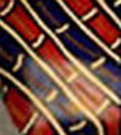 |
Temple Weaving Ephod Design  |
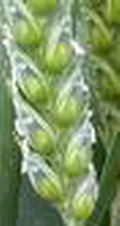 |
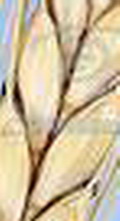 |
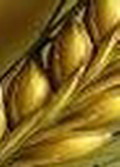 |
 |
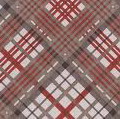
|
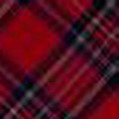
|

|
 |
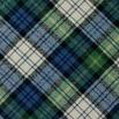
|
Iben Shushan
Iben Shushan in his Hebrew-Language Dictionary (HaMilon HaHadash) in the entry:
"Cotonet Pasim" says # According to the accepted meaning of Genesis 37;3: A garment made of different colored stripes#.
Iben Shushan also notes that in Midrashic Literature Pas means line or thick line i.e. stripe.
Marcus Jastrow, "Dictionary of the Talmud" (1903).
Marcus Jastrow notes (p.1166) the verb "PIS" meaning to divide, split, distribute. This verb was associated was associated by the Sages with the word PAS (plural "pasim" as in Cotonet Pasim, Genesis 37:3) in the Midrash.
Jastrow (p.1191) translates the PAS in "cotonet pasim" of Joseph (Genesis 37:3) as meaning stripe. He gives examples.
Jastrow points out (p.1196) that a word from the same root "PIS, PISPAS" can mean colored stripes or checkers of different colors and brings examples from Talmudic and Midrashic Literature.
# Pasipas...[four meanings are given]:
1) cut and polished stone block...
2) cube, die.
3) check (in garments), square or stripe cmp. PAS.
Paspasin... the faintest checkers (or stripes) [Hebrew: "paspasin"] of the Leviathan's skin outshine the sun (v. Yalk. Lev. 653).-
4) voting tablet, verdict.
In Modern Hebrew "PasiPas" (spelt with the same word root as "Pas" as in "Pasim") means a mosaic since it is comprised of colored squares! A "cotonet pasim" could therefore have been a coat of many colors in a checkered (tartan type) pattern!
Cotonet Pasim means a Checkered Coat!!
The "Coat of Many Colors" (Genesis 37:3) worn by Joseph in Hebrew is "Cotonet Pasim".
"Cotonet" refers to the garment and "Pasim" to its type.
"Pasim" is plural of "Pas".
Pasim according to the simple meaning means "lines" or "stripes" though normally another Hebrew word, "Kav",
would be used if simply lines or stripes were intended.
We may deduce what "Pasim" actually means by referring to Jastrow.
The Dictionary of Jastrow gives the meaning of Hebrew and Aramaic words used in Talmudic Literature.
The full and official titles of his work is:
# A Dictionary of the Targumim, the Talmud Babli and Yerushalmi, and the Midrashic Literature #
compiled by Marcus Jastrow, Ph.D. Litt.D. Philadelphia, USA, 1903.
The Hebrew words he defines are a later development from Biblical Hebrew.
Biblical Hebrew itself differs from book to book.
From the sources referred to by Jastrow we can see that the word Pasipas (derived from "Pas") means checkered or at least that "checkered" is one of its meanings.
This is how the word is rendered in Later Hebrew.
In Earlier Hebrew if we were to translated "Pasipas" we would render it "Pasim".
In other words the word "Pasim" in Biblical Hebrew would double as a plural of Pas and also a construct of Pas.
Therefore one of the meanings of Cotonet Pasim would be a checkered coat!
In the light of the sources taken as a complementary whole the suggestion that a "cotonet pasim" was a cloak of several colors in a tartan type pattern should be accepted as a first choice. It is the answer that fits the different sources more than any other.
(c) Rank:
In the story of Tamar, daughter of David (2-Samuel 13:18) we read:
#Now she had on a robe of many colors ["cotonet passim"], for the king's virgin daughters wore such apparel. #
The "cotonet passim" given by Jacob to Joseph was also a mark of rank and status.
Daat Mikra: #It would appear that we would not be mistaken in suggesting that Jacob when he made this garment intended that there should be fulfilled in Joseph the prophecy he had just received that "kings shall come from your body" (Genesis 35: 11)# (DM Genesis 37:4 n.14b).
Gersonides opined that Cotonet Pasim connoted royalty.
Nachmanides (1194-1270, Spain, Jerusalem in Israel)
Nachmanides (like Gersonides) mentions both the signification of royalty and the tartan-type [tashbets] design.
Nachmanides (Exodus 28:2): ## For these clothes are clothes of royalty and like unto them were worn by monarchs in the time of the Torah. And so we find concerning the Cotonet, "he made him a tunic of many colors" (Genesis 37:3), meaning embroidered in the form of lines [Pasim] this being a garment of [tartan-type] Squares [tashbets]##.
Iben Ezra (1089-1164 Spain, London -England) had opined that the cotonet pasim was an embroidered garment. Nachmanides agrees with him but adds that the embrodered design was a tartan-type (tashbets) design of interlocking squares of many colors.
Daat Sofrim (Rabbi Chaim Dov Rabinovitz 1909-2001, Russia, Israel) on Genesis 37:3.
# Pasim. These were an external expression of appreciation and admiration for the inner essence [of Joseph] as well as an expression of faith in his future. Jacob made him a special garment that symbolized his primacy and superiority...#
Sforno (Rabbi Obadiah Sforno, c. 1470 - 1550, Italy) on Genesis 37:3.
# Cotonot Pasim. This was a sign that Joseph would be the leader in the house and in the field
as it says, AND I WILL CLOTHE HIM WITH THY ROBE [Hebrew "cotonetcha"] ...
AND I WILL COMMIT THY GOVERNMENT INTO HIS HAND [Isaiah 22:21].
The "cotonet passim" was not just an attractive garment. It was also a mark of rank.
The tartan kilts and designs in Scotland were also used to denote rank.
The Many-colored coat of Joseph was a mark of rank, decorated with striped lines of different colors, arranged in squares and interlocking with each other. It may not have been exactly like the tattern patterns we are familiar with but neither would it have been much different and could well have given rise to them. It was also probably made of linen. The first tartan cloaks that arrived in Scotland from Ireland were also made of linen.
(d) Linen
Linen
http://en.wikipedia.org/wiki/Linen
From Wikipedia, the free encyclopedia
Linen is a textile made from the fibers of the flax plant. Flax grows in the
Middle East and in Ancient Times was also raised throughout Europe. The best
linen came from Ireland.
#Highly
absorbent and a good conductor of heat, linen fabric feels cool to the touch.
Linen is the strongest of the vegetable fibers, with 2 to 3 times the strength
of cotton.
..Linen fabrics have a high natural luster; their natural color ranges between
shades of ivory, ecru, tan, or grey linen fabric has the ability to absorb and
lose water rapidly. It can gain up to 20% moisture without feeling damp##
##When freed
from impurities, linen is highly absorbent and will quickly remove perspiration
from the skin. Linen is a stiff fabric and is less likely to cling to the skin;
when it billows away, it tends to dry out and become cool so that the skin is
being continually touched by a cool surface. It is a very durable, strong
fabric, and one of the few that are stronger wet than dry. ##
##Flax is
grown in many parts of the world, but top quality flax is primarily grown in
Western Europe. In very recent years bulk linen production has moved to Eastern
Europe and China, but high quality fabrics are still confined to niche producers
in Ireland, Italy and Belgium. Also countries including Poland, Austria,
Belgium, France, Germany, Denmark, the Netherlands, Italy, Spain, Switzerland,
British Isles and some parts of India.
##The Phoenicians, who, with their merchant fleet, opened up new channels of
commerce to the peoples of the Mediterranean, besides developing the tin mines
of Cornwall, introduced flax growing and the making of linen into Ireland before
the common era, but the internal dissensions, which even in those early days
were prevalent in Erin, militated against the establishment of an organized
industry, and it is not until the twelfth century that we can find records of a
definite attempt to systematize flax production.
##When the
Edict of Nantes was revoked, in A.D. 1685, many of the Huguenots who had to flee
the country settled in the British Isles, and amongst them was Louis
Crommelin,
who was born, and brought up as a weaver of fine linen, in the town of
Cambrai.
He fled to Ulster, and eventually settled down in the small town of
Lisburn,
about ten miles from Belfast. Belfast itself is perhaps the most famous linen
producing center throughout history, during the Victorian era the majority of
the worlds linen was produced in the city which gained it the name
Linenopolis.
Nowadays kilts are often made with a wool and linen admixture. The linen
provides strength, durability, and water-resistance. Such mixtures are however
forbidden in the Torah.
#You shall not
wear a garment of different sorts [Hebrew:
shaatnez],
such as wool and linen mixed together# (Deuteronomy 22:11).
#Nor shall a garment of mixed linen and wool come upon you# (Leviticus 19:19).
Today in the state of Israel and in areas where Religious Jews are concentrated
overseas there exist shaatnez laboratories that can tell whether or not a woolen
garment (the usual case) has any linen admixture.
Linen does not absorb natural dyes easily. For this reason the Bible (as
explained by the Sages) allowed a woolen thread dyed with a special blue color
to be attached together with white linen tassels to each edge of a four cornered
garment.
#Speak to the
Children of Israel and bid them that they make fringes on the corners of their
garments throughout their generations, and that they put upon the fringe of each
corner a thread of blue (tekhelet).
And it shall be for you as a fringe, that you may look upon it and remember all
the commandments of G-d, and do them...# (Numbers 15:38-39)
The secret of making the blue thread was lost some time ago but nowadays
attempts are being made to revive it.
See:
tekhelet
http://www.tekhelet.com/
The difficulty that then existed of dyeing linen may explain the
great prestige and value possessed by the cotonet pasim being made of colored
strips woven together and interlocking threads in a square-tartan type patterns.
(e) Conclusion:
All of the above brings us back to the meaning of the Hebrew words "Cotonet
Pasim" and the varying interpretations they lend themselves to.
The Brit-Am approach (which really is that of leading Rabbinical Authorities and
Commentators) is to regard the Hebrew text as the sacred words of the Almighty.
Every word used is there for a reason. The different nuances of a certain word
or group of words may all have significance at one and the same time. This
approach is not just one based on faith but may be justified objectively by an
examination of the text.
"Cotonet" means some type of garment. Nearly everyone seems to agree on this
point.
"Pas" according to the Concordance of Iben Shushan [Hebrew] means "retsuah" i.e.
"strip" as in Cotonet Pasim (Genesis 37:3].
The Cotonet Pasim was therefore made out of strips (pieces) or bore a striped
design.
"Pas" can also connote "piece", "part of", end, trim, finish, etc.
The word "pas" is used for the palm (or piece of) the hand in Daniel 5:5.
One interpretation is that "cotonet pasim" meant a garment reaching to the ends
(pasim) of the body i.e. the ankles and hands.
It can mean "stripe" or line. The Talmud (Shabat 10b) said it meant "stripe".
There is a certain logic in considering Pasim to refer to the design on the
garment rather than the cut or tailoring aspects of the garment itself.
The word Pas (singular) or Pasim (plural) may also be related to the word "Pas"
or "Pasah" meaning the increase and the spreading of color as in the cease of the
signs of leprosy (Leviticus chapter 13). It may be objected that "Pasah" meaning the spreading of color is
spelt with a "Sin" (for the "s" sound) and not with the "samech" (as in the word
Pas meaning stripe) but "sin" and "samech" can interchange (e.g. Tosefta, Yom
HaKipurin 1;9).
Not only that but in Rabbinical etymology the letter samech is considered a weakened devolution
of the letter sin (Sources quoted in the works of Matatiyahu Galzerson).
Jastrow (p.1244) points out that PaSaH with a sin and PaSaH with a samech are two different forms of the
same word meaning to spread or expand and used in the Bible concerning the spreading of color (e.g. Leviticus 13:51).
It may be therefore that another meaning of "pas" implies "color".
We saw that most of the Classical Commentators did say that the garment was of
different colors in addition to which several mentioned stripes while others
said squares, checkers, both stripes and squares, or in diamond-type formation [i.e. tartan] as found in the overlapping buds of an ear of wheat.
See the Table below:
The Different Eplanations: |
In accordance with Rabbinical Tradition, the special qualities of the Hebrew Language, and the opinions of Nachmanides and HaNatziv we would say that a correct interpretation of what the reality was is to be found through a synthesis of the above opinions:
The Commentators Explain:
The coat was of several colors, of interlocking lines making square shapes, and it denoted rank and status.
Such garments were known in the region of Ancient Canaan in the time of Joseph and afterwards and were considered (by the Egyptians) as typical of dignitaries coming from there.
Illustrations are given on the next page.
In addition to the above we find garments of tartan design in the Temple Service as described on page 3.
Continued on Page 2
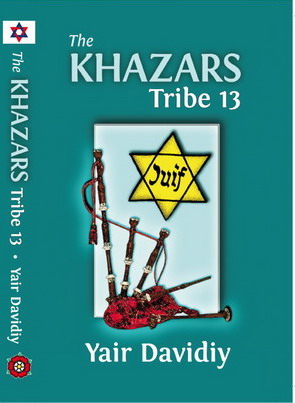 |
"The KHAZARS
Tribe 13 Now Available! http://britam.org/books.html Click Here |

Pleased with what you read"
Click Here to make an offering. |
'It is impossible to rightly govern the world without God or the Bible.'
George Washington
Brit-Am is the "still small voice" that contains the truth.
[1-Kings 19:12] AND AFTER THE EARTHQUAKE A FIRE; BUT THE LORD WAS NOT IN THE FIRE: AND AFTER THE FIRE A STILL SMALL VOICE.
 |
 |
